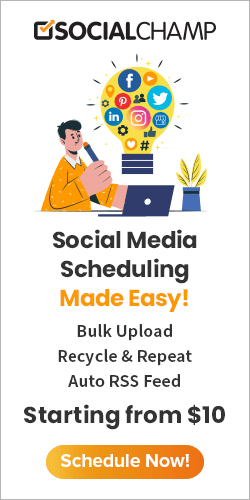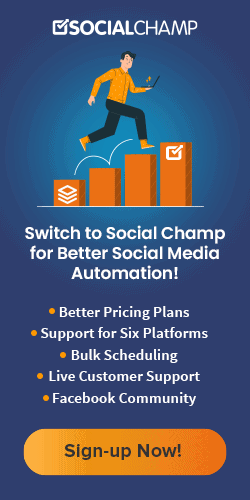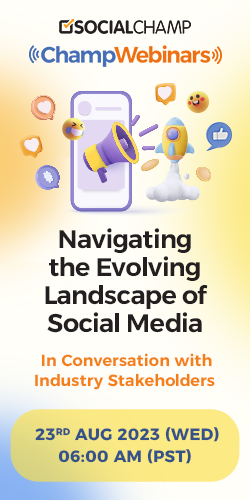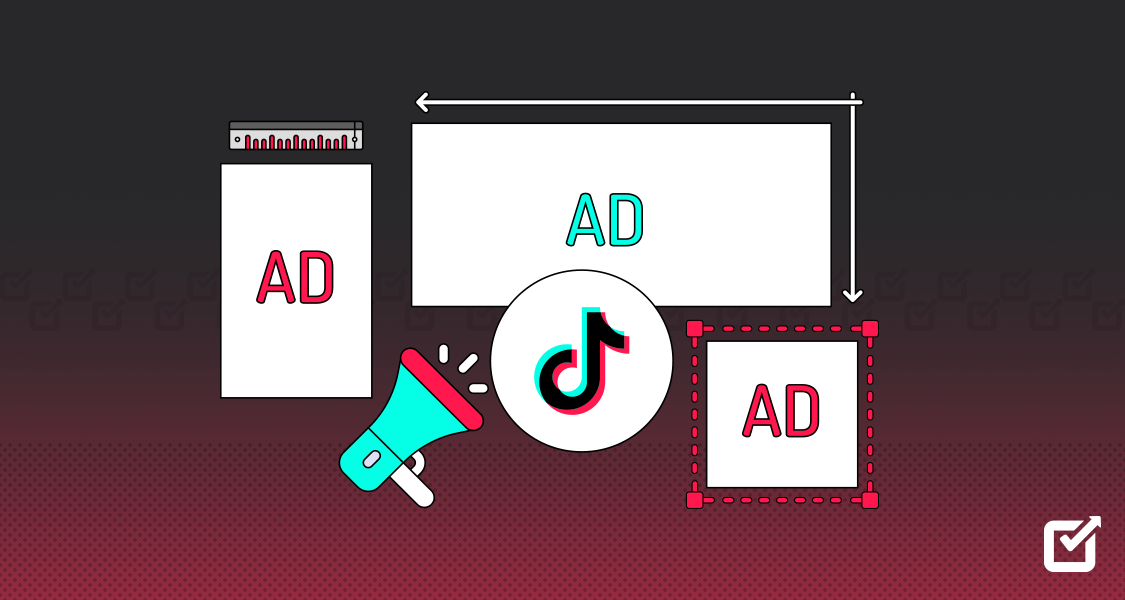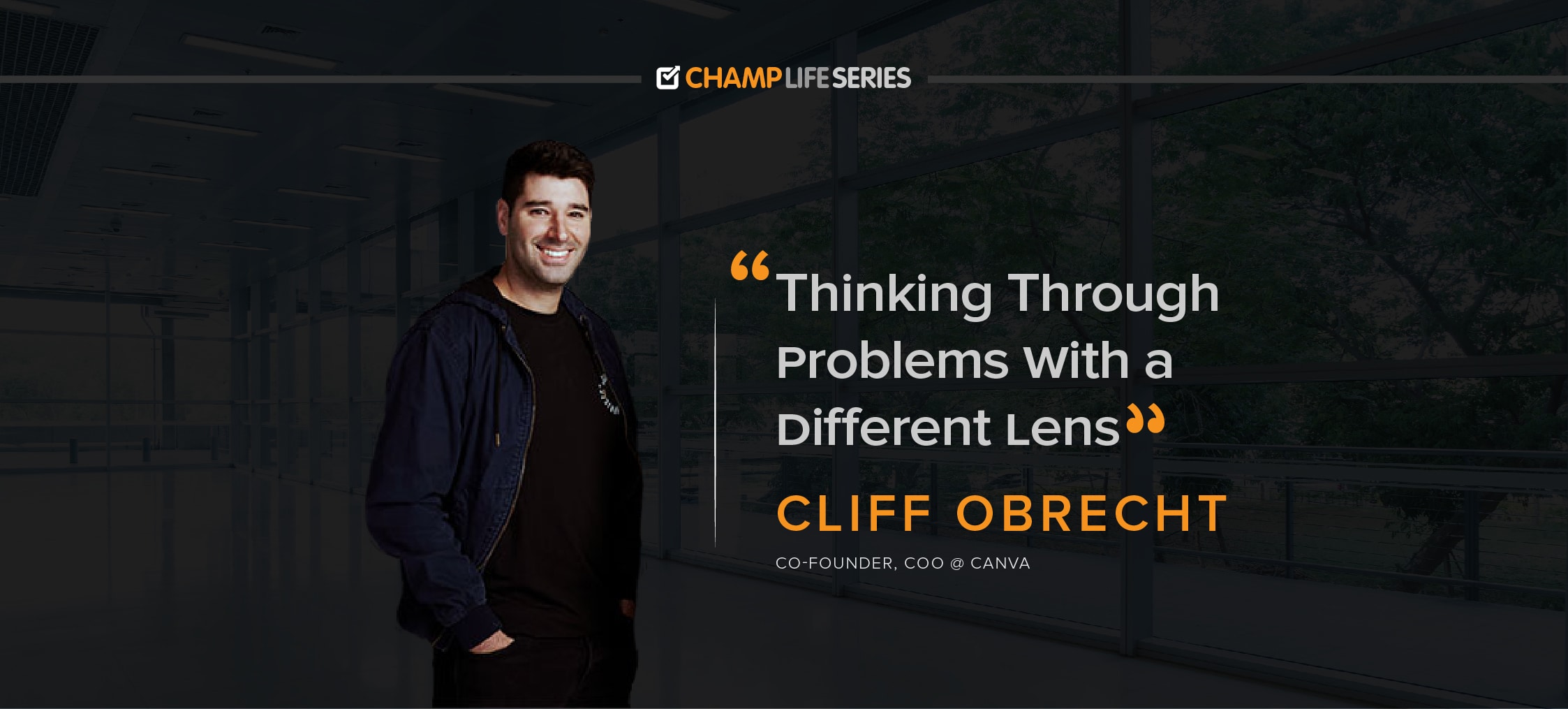It’s time to start planning your marketing strategy for this year. It is necessary to evaluate last year’s data and set goals, objectives, and the desired success for 2022. If you’re running a business on Facebook, you’ll need to know what’s popular with your customers. Facebook is constantly introducing new metrics to track various aspects of your business. What are some key Facebook metrics you should be monitoring during the next 6-12 months? Let’s find out in this blog.
Facebook is used by more than 1.79 billion users worldwide every day. Each of them can interact with your brand when used properly with marketing tools. But to use them, it is necessary to evaluate the social network indicators periodically.
Today, we will talk about the primary Facebook metric to track for organic publishing & paid advertising in 2022.
Why Is It Important to Analyze your Facebook Metrics?
Facebook’s metrics have several benefits for your business, like:
- Facebook metrics are essential because the company can weed out the posts that are not engaging with their audience. They can also see more successful posts and replicate them for Facebook posts in the future.
- Save you time and money. From the information you gather, you will know if it is beneficial to continue with a campaign or not.
- It helps you create customer-centered service by looking at your clients’ comments from your fan page. By extension, you get to know your clients better.
- It allows you to collect and store valuable data that will help you improve your overall business.
- Companies can learn how they are doing financially, what parts of the country their customers are coming from, what demographics are more active on their pages, and what posts are popular.
Facebook Metrics You Should be Tracking in 2025
There are several Facebook metrics you can look at. This article will learn about essential metrics you should track when using Facebook for marketing. You can follow these metrics from the Facebook ad manager while running your paid campaigns.
Facebook Metrics You Should Track for Organic Post in 2025
Facebook is one of the best social media platforms for organic marketing – as long as you know what you are doing.
Those who are familiar with the marketing strategy on Facebook will agree that the channel offers several ways to optimize costs and increase traffic to your website. From eCommerce Facebook ads to Insights for organic reach, the network is equipped with elements to help you dominate the market.
But the greatest part about Facebook is the simplicity of its analytics feature. Metrics such as page likes, reach, and engagement is intuitive and doesn’t require too much digging to grasp what’s going on in your page.
However, the success of your brand’s Facebook page does rely heavily on understanding these key metrics. So, let’s get into the details of the metrics that you should track for the organic posts in the year 2022.
Facebook Page and Post Metrics
Facebook page and post metrics are the most important factors to consider when measuring your organic Facebook performance.
The quality and frequency of your content are as important as the way you engage your audience. The greater your organic reach, the more people will see your content when you post it, which means you are likely to get higher interaction.
There are many metrics that you can measure regarding the performance of your Facebook Page and Post. Some of the most important ones are:
- Engagement
- Engagement Rate
- Organic Reach
- Impressions
- Page Likes and Followers
Engagement

Engagement is the most important Facebook performance indicator as it determines the interactions on your posts. It also tells you how many people are taking action on your post, such as sharing, commenting, liking, and clicking.
For instance, check this screenshot:
The post has a decent amount of reacts, comments, and shares, which means it has only an average organic reach.
Where Can You Find Engagement?
Go to the insights section of the Facebook Business page. Then select ‘Published Posts’ under the engagement graph. Click on any of the posts to see its performance.
What does Engagement mean for Your Business?
Each business has different Facebook goals. While some want to increase their reach, there are many who want more page engagement, page views, or more followers.
The best way to gauge whether or not your Facebook page is performing well is to compare yourself with those akin to you. For instance, you can compare the number of page likes with competing pages in the same industry.
The engagement rate offers marketers a more precise result of their performance.
This rate is calculated by dividing your total post engagements (likes, comments, shares) by the total reach of your page and multiplying by 100.
For example, you posted 10,000 followers on your page. However, you receive 100 shares, 100 comments, and 200 likes.
Thus, your engagement will be 400 (100, 100, 200)
To calculate the engagement rate, you will carry out the following equation:
400 / 10,000 x 100% = 4%
It is important to note that the higher your engagement rate, the better you succeed in connecting with your audience. This will lead to higher impressions and a potential increase in traffic.
Engagement Rate
The engagement rate offers marketers a more precise result of their performance.
This rate is calculated by dividing your total post engagements (likes, comments, shares) by the total reach of your page and multiplying by 100.
For example, you posted 10,000 followers on your page. However, you receive 100 shares, 100 comments, and 200 likes.
Thus, your engagement will be 400 (100, 100, 200)
To calculate the engagement rate, you will carry out the following equation:
400 / 10,000 x 100% = 4%
It is important to note that the higher your engagement rate, the better you succeed in connecting with your audience. This will lead to higher impressions and a potential increase in traffic.
Organic Reach
Organic reach on Facebook refers to the number of people who saw one of your posts in their feed – without any paid distribution. The organic reach is listed on the Posts tab on Facebook Insights. You can calculate the organic reach by dividing the number of updates you post by the number of organic users you have.
Suppose you have 50,000 users and you have published a total of 20 updates this month. The results for your organic reach will be 2,500.
Impressions
Impressions are the number of times a post shows up on the timeline of users. These can be measured by looking at the number of times your posts were displayed on the newsfeed and the right rail.
Impressions are really important because they tell you how many people you are reaching with your content, but it’s important to remember that the more posts you make, the fewer organic impressions you will earn.
This means that your content won’t be displayed as often to the same people who saw it once since their newsfeeds are getting more crowded.
If you want to check post impressions, go to Facebook Business Creator: check “Content Library” and click on any post for which you want to see insights.


Page Likes and Followers
Your page likes are considered an “earned” metric because you can’t directly pay Facebook to grow your page.
If you want to increase your page likes, you should create engaging content and post at optimal times according to your industry and the preference of the target audience.
To measure the number of page likes you have, simply look at your page insights and click the overview tab to see the followers who connect with your page.

Facebook Group Metrics
Measuring Facebook group metrics is important because you can use this information to determine the best time and type of content to share with your group members. This information is available to groups that have more than 50 members.
Engagement Rate
One of the most important metrics that you should track when marketing on Facebook is the amount of engagement each post gets.
The more comments, likes, and shares your posts receive, the more likely it is that Facebook will rank them higher and help you reach a larger audience with your message.
This also means that Facebook will give your post more exposure, which could potentially lead to organic Facebook marketing success.
For instance, check the growth of this group:

Top Contributors
Top contributors are the users who are most engaged in your group. The member who likes, comments, and shares the most.
Click the insights tab under top contributors to see which group members have been sharing your content, liking your posts, and making comments more than others.
Top Posts
Top posts are the most engaging posts that top contributors have shared. These should be the type of content that really resonates with your audience.
To see which posts engage your audience, go to the top posts section under insights and click on the tab for top contributors.

Make Your Facebook Marketing Hassle-Free
Social Champ’s Analytics feature saves marketers time by showing the organic results of Facebook posts with charts & graphics. You can also download presentation-ready reports of your Facebook metrics.
Facebook Video Metrics
It’s important to keep track of video metrics because they can help you determine the ideal length and type of content to produce. Go to the post overview to check Facebook video insights and click on the “Viewers Activity.”
Audience Retention
Audience retention is a very important Facebook metric. It conveys how long the audience watched your video and whether the overall footage is too long.
If you see the screenshot, the drop-off is at 0:22, which is very low if the video length is 2:30. It means the content isn’t aligning with the audience.
Analyzing video metrics can help you to curate content that engages the audience and signals the Facebook algorithm that users are connecting with you.
This way, Facebook recommends your content to more users who might be interested in your niche.

How People Are Watching
It’s a breakdown of your views if people are watching the video, who they are, and how they found your content.
Facebook divides them into three categories:
Recommendations: It’s an audience that Facebook recommends to watch your content.
Followers: They are your organic followers who often connect with you.
Shares: People who watched your video after someone shared.

Video metrics show you how your videos are performing. Measuring them keeps you informed of the most effective type of content to create and can provide insights into which audiences you should target in the future.
Facebook Brand Awareness Metrics
There are different ways to measure brand awareness. For instance, you can check your number of Facebook page likes, the number of people talking about your brand, the demographics of people who engage with you, or the number of brand mentions.
Facebook Referral Traffic
This is the number of people who clicked on your Facebook post and went to your website. Tracking this metric lets you know how persuasive your content is and what popular types of content trigger an immediate response.
Referral traffic is a great way to measure the effectiveness of your social media content. If a post induces more people to visit your website, that post is performing better than others.
What Demographics Are Engaging With Your Content
This metric checks how many people engage with your Facebook posts. It aims at checking the demographics that are most interested in your content.
For instance, if you post a video, the age and gender, region, and even country of people who watch it can indicate your target audience.
When you have insights about demographics, you can tailor your content to the right audience and get better results.
To check demographics insights, go to the “Post Overview” in the Facebook Creator Studio, and check the region, country, age, and gender of your audience.
When you know your audience’s demographics, it will become easy to plan your future posts.
When you understand important Facebook metrics, you can see how your marketing efforts impact your business. Use this knowledge to produce better content that resonates with people on Facebook, motivating them to click on your post and visit your website.



Facebook Performance Metrics
Results
Results tell you the total number of times that your campaign has achieved its desired goal or outcome. This can be considered the most important metric of every ad campaign. The results you consider essential will vary according to the type of campaign and the goals you set.
Results will usually indicate a conversion metric, such as sales or downloads. If you are just aiming for brand awareness, then traffic will be considered the desired result. Let’s look at some common results metrics;
- Website Purchases – the total number of purchases that happened on your website.
- Leads – the total number of leads acquired on your website
- Form Leads – the total number of people who filled out a form and gave you their contact info.
- Custom Conversions – the number of ebook downloads, webinar signups, free trial signups, or whatever else you offered in your ad.
Cost per Result
This measures how much each desired result cost. The simple formula for calculating this is total ad spend divided by the number of results. As we already discussed, the desired result will differ depending on your ad campaign.
Regardless of the goals of your campaign, the cost per result is a vital metric for measuring your success. Wordstream compiled a database that shows that the average cost per result will vary widely according to the industry you are in. In the education industry, it may be as low as $7.85. In the tech industry, it can be as high as $55.
Result Rate (Conversion Rate)
The Result Rate means the percentage of desired results achieved when compared to the total number of impressions (the number of times your content entered someone’s screen). The simple formula for calculating this is the number of results divided by the number of impressions.
Spend
Your spend is the total amount that you spent on your paid campaign over a fixed period. You need to be aware of this metric so you can ensure you stay within your budget. You also need to think about other cost metrics, such as cost per result, to make sure you are generating positive returns and not throwing money away.
ROAS (Return On Ad Spend)
Your ROAS will tell you the amount of revenue you receive for every $1 which you have invested in ads. This is one of the most telling metrics to understand if you wish to have a successful paid campaign. The simple formula to calculate ROAS is total revenue divided by total ad spend.
Facebook Delivery Metrics
Impressions
This means the total number of times that your ads were shown on somebody’s screen. The more impressions you have, the more brand awareness you receive. Impressions are different from Reach.
Reach measures the number of people who have seen your ad. If one person saw your ad five times, this would count five times towards calculating Impressions, but only once towards measuring Reach.
CPM (Cost per 1000 Impressions)
This metric measures the cost of achieving one thousand impressions. It measures the cost-effectiveness of your Facebook ad campaign. It is a great metric to compare across different platforms and different campaigns.
Measuring CPM can help you to understand how pricing is fluctuating. Facebook Ads is an auction system. Your cost per result could be increasing because your target audience is becoming more competitive or because your conversions are dwindling.
Measuring your CPM will help you to recognize whether your ad placements are becoming more expensive and allow you to compare prices across different platforms.
Frequency
This means the number of times that a person has seen your Facebook ad. This can be important to measure if you have a very narrow and specific target audience. Many people need to see an ad several times before they make a purchase. However, if they see it ten times or more, we can consider this over-saturation. In this case, you may need to expand your audience.
You can keep an eye on frequency. However, if your conversion rate remains high, likely, you aren’t oversaturating your audience.
Facebook Engagement Metrics
Clicks
This means the number of times people have clicked the link in your ad. This confirms that your ad is engaging. If no one is interacting with the ad, you will not get any conversions. Clicks are a key metric that confirms that your audience is interested in what you are offering.
CTR (Click-Through-Rate)
This metric tells you the number of clicks compared to the number of impressions. If you see 100 clicks for your ad, you might think this indicates good performance. However, if the number of impressions is 100,000 then these 100 clicks might not seem so impressive anymore.
This metric is calculated by dividing the total clicks by the total impressions. If you have 100,000 impressions and 100 clicks, your CTR will be 0.1%. If the number of impressions was only 1,000, your CTR would be a more impressive 10%. Comparing clicks to impressions in this way lets you know how engaging your ad campaign really is.
Post Engagement
This means the number of reactions, shares, comments, and clicks that you received. If you are split testing different types of ads, then post engagement and CTR are two of the most important metrics to determine how much the ads appeal to your target audience.
Facebook Metrics You Should Track for Paid Campaigns in 2025
Despite many businesses and brands jumping to other social media channels, Facebook still remains the king when it comes to social media marketing. According to Statista, 2.8 billion people use Facebook every day.
Building an online presence on Facebook is undoubtedly a great way to attract potential customers. Facebook metrics help you to measure the success your campaigns are having. There are many important considerations when it comes to running Facebook ads.
2025 Facebook Privacy Updates
When Apple released ioS 14.5 in April 2021, they introduced strict privacy rules for apps. These rules require developers to use the App Tracking Transparency framework. This lets users decide whether they want to allow apps to track their activity.
Only 4% of users allow apps to track them. This means that almost all people using new Apple products are not allowing Facebook to track their activity. This mass opt-out demanded changes for Facebook ads.
Facebook has had to limit some of its most lucrative ad targeting options. They began rolling out changes to their advertisers’ targeting, tracking, and reporting options in July 2021.
Why Use Paid Ads?
The organic reach on Facebook has dwindled in past years. Facebook now favors showing posts from family and friends over posts from businesses or services. Paid ads can enable you to reach a much wider audience.
The Facebook Ads platform offers a serious amount of analytics data that you just won’t find on other platforms. You won’t have to do any guesswork when wanting to understand every aspect of how well your ad is performing.
Facebook allows you to target specific audiences according to their age, interests, behaviors, locations, languages, etc. This means you can really hone in on your target audience. This is likely to lead to more engagement and, ultimately, more conversion.
Facebook Ads are very user-friendly when it comes to creation. Here you can choose the kind of ad you would like, target your audience, and set a timeframe and a budget. You will be guided through several easy steps.
Facebook algorithms will show your ads to people who have interacted with your business page before. This means that you can reach people who have an active interest in your product or service.
Once you trigger an ad, you need to know how to measure and maximize its performance. Many marketers don’t look beyond views and likes. The importance of these kinds of vanity metrics is often overestimated. In this article, we will look at some other important metrics to consider.
Where Can I Find Facebook Metrics?
You can go to your Facebook Ads Business Manager page. Here you will find a complete list of the metrics available. You can choose which metrics are the most important and save them as a preset. Adding these metrics to your dashboard will give you quick and easy updates on your campaign performance.
Metrics can be broadly divided into three different groups. Performance metrics look at the results you are achieving and the cost of hitting your goals. Engagement metrics look at how well your ads appeal to your audience. Delivery metrics look at the delivery of your campaign and how much it costs for it to be seen.
In Summary
Facebook Ads can be considered one of the most potent opportunities to grow brand awareness, generate leads, and make sales. When running your first ad campaign, the amount of information given to you can be overwhelming. Many marketers focus only on vanity metrics (likes and comments). However, this will not give you a complete picture of how successful your paid campaign really is.
Understanding the Facebook metrics mentioned in this article will be key to boosting the ROI (return on investment) of your organic & paid campaigns. If you focus on the metrics mentioned here, you can start to optimize your posts & campaigns and make sure they are performing well.














